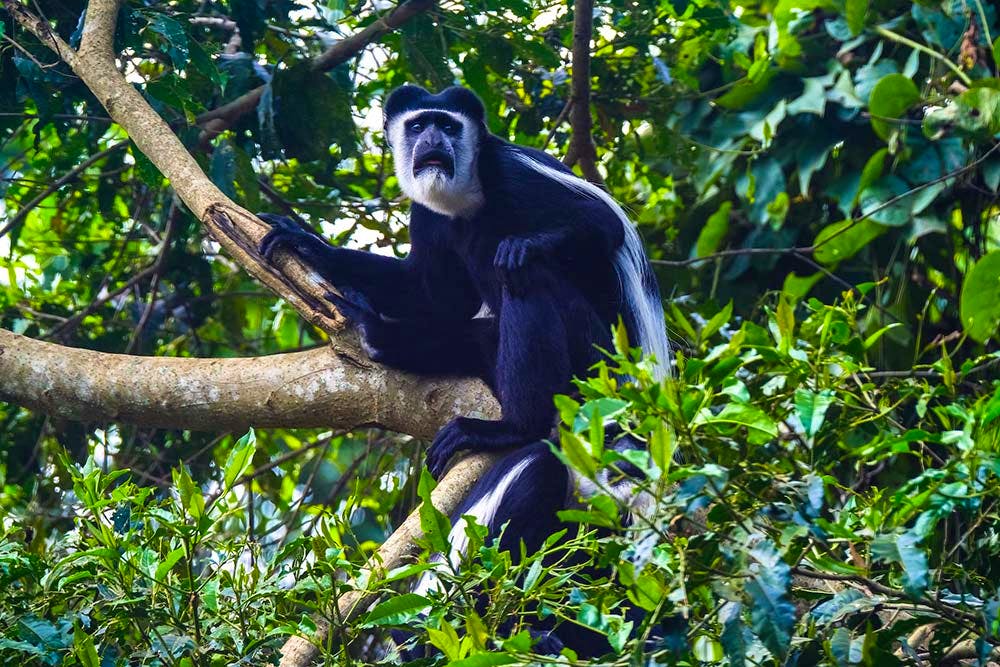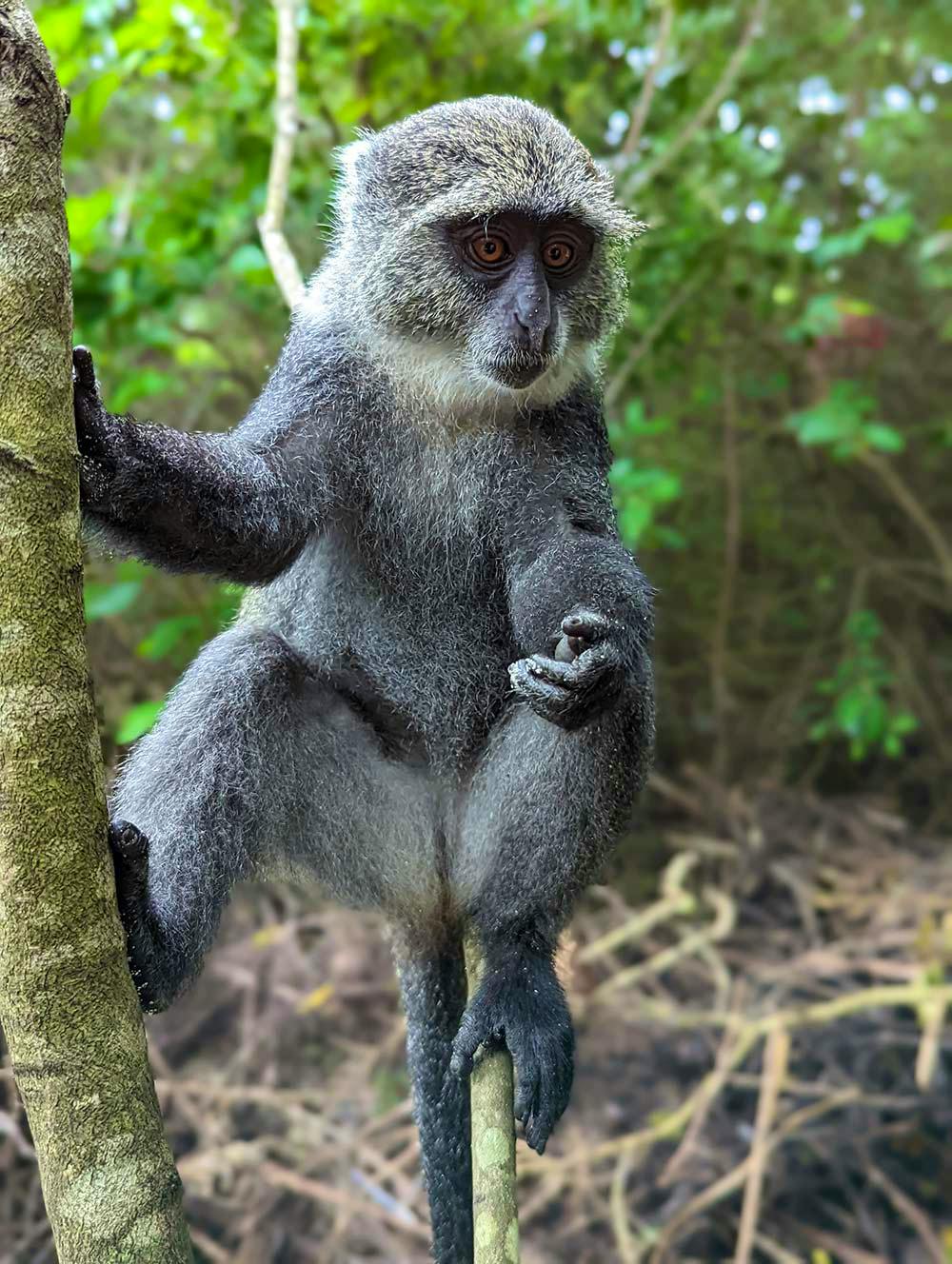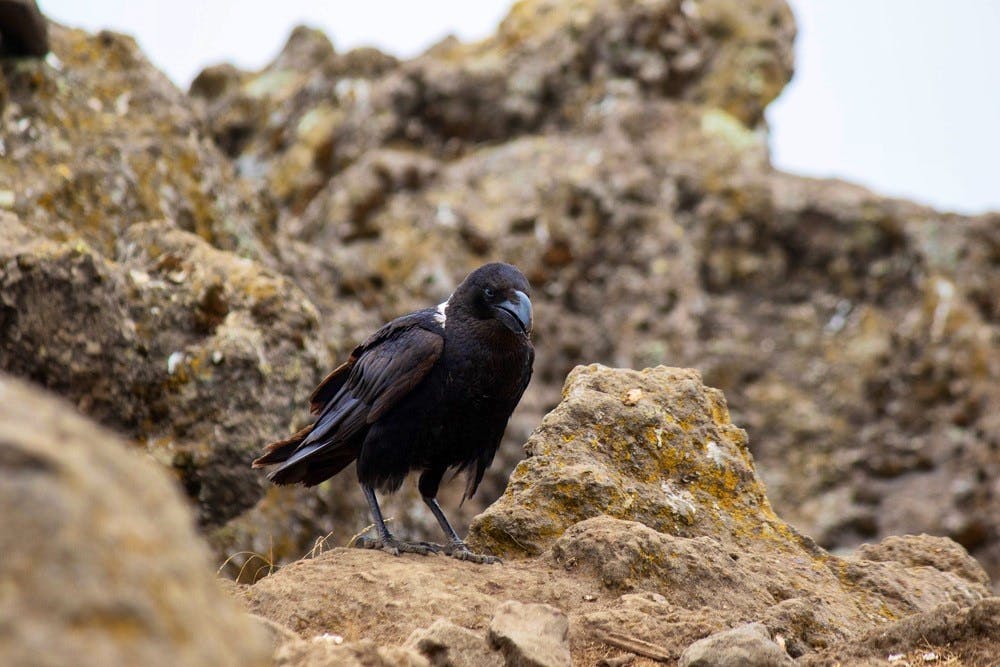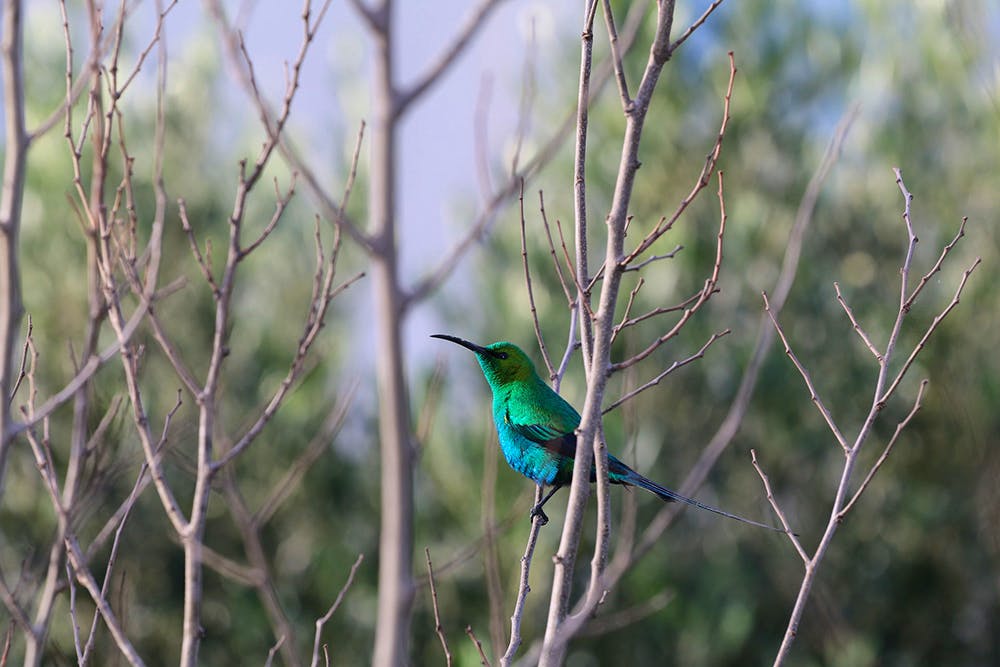Animals On Kilimanjaro: What Might You See On Your Trek?
If you have booked or are about to book your Climb Kilimanjaro trip, you might be wondering about the animals on Kilimanjaro.
With the mountain located in the Kilimanjaro National Park, you might spot some of the wildlife that calls the slopes of this iconic mountain home at the start of your trek.
Which Routes Have the Most Kilimanjaro Wildlife?
Your chances of spotting animals are generally highest on the Rongai and Lemosho routes. Rongai passes through a drier, more open landscape, and Lemosho moves through more varied ecosystems.
It’s good to note that wildlife sightings aren’t guaranteed on your trek. So, booking a safari is best if you’re set on seeing animals during your Tanzania trip.
Good to know: Skyhook offers a 2 days safari Tarangire and Ngorongoro.
Animals on Kilimanjaro
Kilimanjaro's terrain is a habitat of extremes, from the bustling montane forests to the rugged alpine deserts. It hosts a variety of wildlife, from large mammals to small ground animals and birds that have made the mountain their home.
You will notice that most of the animals on Mount Kilimanjaro inhabit the lower forested regions of the mountain. As you ascend, the environment becomes less suitable for many wildlife species.
The hiking trails also bypass the main habitats of the larger Mount Kilimanjaro animals, so you can expect to see more of the smaller-sized animals like monkeys and antelope species on your hike.
Here are some animals on Kilimanjaro you can encounter.
1. Colobus Monkeys

The Colobus monkeys of Mount Kilimanjaro are a fascinating species that live in the rainforest and montane forest zones. They spend all their time in the trees and rarely come down to the ground.
The monkeys have striking black fur with a fringe of long, white hairs running down their sides. Their face, hands, and feet are hairless, displaying a distinct greyish or pink colouration that gives this Kilimanjaro animal a ghostly appearance.
Colobus monkeys feed on the fruits, leaves, and vegetation on the lower levels of Mt Kilimanjaro.
2. Blue Monkeys

The Blue Monkeys are another intriguing primate species found in the lush forests on the mountain.
These Kilimanjaro monkeys have a greyish-blue to olive-grey colour with a slightly bluish tint, which becomes more prominent in adult males. They have a lighter-coloured face with a pink or pale face ring around their eyes.
Blue monkeys consume a varied diet that includes fruit, leaves, flowers, insects, and sometimes small vertebrates.
As such, you will often see them in the mountain's dense vegetation and forested areas. They are well adapted to life in the trees and have strong limbs and a prehensile tail that helps them move effortlessly through the forest canopy.
While they can be somewhat elusive, patience and a keen eye will give you a memorable sighting of the monkeys as they move gracefully through the treetops, forage for food, and engage in social interactions.
3. Bushbucks
These solitary Kilimanjaro antelopes have a reddish-brown to greyish-brown coat with white spots and stripes, which helps with camouflage in their forested habitats.
Bushbucks are primarily browsers, feeding on leaves, twigs, and fruit, and they are known for their adaptability in terms of food sources.
You could spot them in the montane forest and lower rainforest zones of Kilimanjaro, as these areas offer ample vegetation, shade, and water sources.

Latest Deals
4. Duikers
Duikers are generally small to medium-sized antelopes, with males and females exhibiting slight differences in size. Their fur varies depending on the species, but it often includes shades of brown, grey, or reddish-brown to help the animals blend into their surroundings.
Duikers are solitary animals; you’ll often spot them foraging the vegetation on the mountain alone or with their young ones.
You might see them moving stealthily through the underbrush or emerging on your hiking trail during the early morning or late afternoon hours when they are most active.
5. Tree Hyrax
As you ascend or descend the alpine forest, you might see or hear the hurried flurry of the tree hyrax, a unique creature resembling a plump, rabbit-sized ball of fur.
This Kilimanjaro animal has dense, greyish-brown fur that helps it blend seamlessly onto the mountain's tree branches and rocky outcrops. It hides in the rock crevices, occasionally darting among the trees in search of fresh twigs, leaves, and fruits.
Tree hyraxes form strong bonds, and you’ll often see them in groups. They exhibit behaviours like grooming and vocalisations to maintain social cohesion.
The Kilimanjaro Tree Hyrax's vocalisations are peculiar to their presence on the mountain. Their shrieks and whistles pierce the otherwise quiet night, and these vocalisations serve both social and territorial purposes.
6. White-Necked Raven

The White-Necked Raven is another notable member of the Kilimanjaro wildlife. These large birds are predominantly glossy black, with a striking, contrasting white patch around their neck and upper breast, thus their name. Their strong, hooked bills are well-suited for their omnivorous diet.
One of the remarkable aspects of the ravens is their adaptability to high-altitude environments. These birds are true alpine specialists, comfortably navigating the rocky slopes and cliffs of Kilimanjaro's upper reaches.
You'll notice their keen eye for opportunities - foraging for natural food sources and scavenging from human campsites. Their diet includes various items, from insects, small animals, and plant matter to the occasional human snack left unattended.
The bird's resilience in the face of Kilimanjaro's ever-changing weather conditions is admirable. You’ll often see them soaring gracefully on thermal updrafts to conserve energy and find an aerial perspective of their environment.
7. Hartlaub’s Turaco
Trekking through the lush montane forests of Mount Kilimanjaro, you might be awed by one avian resident - the striking Hartlaub's Turaco.
This bird, scientifically known as Tauraco hartlaubi, sports a plumage adorned with vivid shades of red, green, and white, with a vibrant crimson cap atop its head, adding to its allure.
Hatlaub’s turacos are well-suited to the montane zones of Mount Kilimanjaro, making their homes in the dense vegetation and tall trees.
Their vivid colours are also a form of camouflage, allowing them to blend seamlessly with the rich foliage of the forests.
8. Malachite Sunbird

The Malachite Sunbird is truly a jewel of Kilimanjaro's avian world. The males of this species are adorned with iridescent plumage - an intense combination of metallic greens and blues that seem to change with every shift of light.
Their striking colouration is particularly prominent during the breeding season (colder months), when they exhibit their full, radiant beauty.
The primary diet of Malachite Sunbirds is nectar. Their specialised long, slender bills are perfectly adapted for sipping nectar from the blossoms of montane flowers.
These tiny birds flit gracefully from one bloom to another, helping pollinate the local flora.
The birds are also known for their altitudinal migration. They follow the blooming cycles of the montane flowers up and down Kilimanjaro as they move to different elevations in search of nectar-rich food sources.
Other Kilimanjaro Articles
Find your next adventure
Why Skyhook?
Join over 27,000 Skyhook adventurers who've used our platform to book directly with our vetted local guides, at local prices (we never markup).
Expert Local Guides
Experienced local guides, handpicked by us.
Best Prices
Never pay a markup on the local guide's price.
Exclusive Club
Earn loyalty rewards every time you travel.
Great Social Vibes
Small group tours provide a richer experience.
Stellar Feedback
Over 2,800 reviews, average of 4.9/5 stars.












